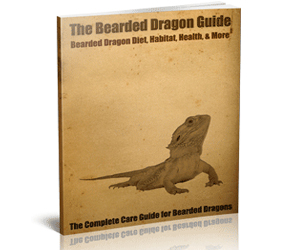Bearded Dragon Myths
Myth: Bearded Dragons are lazy
It is very sad that so many people think the problem lays with the dragon and not with themselves. Bearded Dragons kept in thriving conditions, allowed loads of freedom and sunshine are active. They bask until they reached the desired temperature and then move around the rest of the time, foraging for food, running over rocks, ‘play’ etc. They are extremely busy creatures most of the day!
Myth: Bearded Dragons should always stay in their enclosure
Keeping a Bearded Dragon locked up is like a sentence to hell for these guys. Being locked up is unnatural, it is against their nature to be confined to one space. This will lead to desperate boredom that are interpreted as laziness. If you take your Dragon out and he just stays in one area then it is because he was not at the desired temperature or the area where you want him to roam is too cold, it has got nothing to do with laziness.
Myth: Bearded Dragons display stress lines on their tummies
The lines that sometimes appear on the tummy does not mean that he is stressed. The outward appearance of Dragons reflects their mood. They become darker to absorb more heat and this will cause the lines to be more prominent, they also have a dark ugly appearance when bored and unhappy and no lines might be visible. They show more orange when happy and active and a light appearance when they are hot. After a swim in the ‘rain’ they will make themselves darker to absorb more heat from the sun and the lines will also be more prominent. My one dragon’s beard goes black when he is up to mischief and in his element. My other dragon’s beard goes orange when he has his mind set on something. Both their beards go black when they encounter each other and no lines appear on the tummies although they are both clearly stressed. If you get to know your dragon by heart you will be able to read the outward appearance correctly.
Myth: Bearded Dragons hate change and need days to settle into a new environment
We are not talking about relocation stress, a newly acquired Dragon needs to settle in for at least a week before handling may start.
Dragons love exploring new environments, they get bored with the same cage set up and you need to change things around to stimulate natural behaviour. They love going on holiday and show absolutely no signs of stress or even unhappiness, as long as you are around they are thriving. If your dragon could choose he will most probably choose to hang around on your shoulder for most part of the day. The only thing they do hate is being locked up.
Myth: Bearded dragons can be housed together successfully
In nature when bearded dragons hatch they run to find a SOLITARY and thriving environment, FREE from fellow siblings, predators and even other species of dragon. They are not social creatures, their first and strongest instinct is to get away from all other and stay away until their hormones drive them to mate. Even then, they mate and disappear never to be seen together again.
Yes, people house them together but will never have a thriving dragon. No, it cannot be done successfully, you cannot alter nature.
Myth: Dragons dont need to drink water, they get all their water from the food
Their natural environment gets between 200-250mm of rain a year and therefore it is referred to as desert. In order to survive the plants retain the water in their leafs, stems and roots. In the wild bearded dragons get their water from eating these plants but we do not feed our dragons desert plants. Our plants do not retain water because they are grown in high rainfall areas. Dragons kept in captivity need additional water, it is like super juice to them.
Myth: Dragons absorb water through their skin. (People even say that about iguanas – it is FALSE.)
There are documents on the internet written by a well known woman who suggest this theory. However, it was written based on studies dated 1988 to 1996. It has since been proven that reptiles do not absorb water through their skin.
Myth: You need to chop the heads off superworms or they will chew a hole through the bearded dragons stomach.
Complete nonsense, no feeder will survive all the way down to the stomach.
Fact: Feeders left in the cage will nibble on your dragon while he sleeps.
Crickets, roaches, all insects will bite your dragon during the night. Insects that are hungry eat each other and will eat anything that is placed in front of them, they are like garbage disposals.
Myth: Calci-sand is digestible and can safely be used as a substrate.
Calci-sand contains calcium carbonate which is used as an antacid. The direction for human consumption clearly states that it should never be used for longer than 2 weeks. There are also clear instructions of what to do if overdosing occurred and hospitalization is required. Humans are a thousand times bigger than a reptile, if we cant use it safely for more than 2 weeks how can reptiles live on it for months even years? Calci-sand neutralize the acid in the reptiles stomach, in high doses, this can easily lead to an impaction as the reptiles acid would become so neutralized that it would no longer be able to digest any additional calci-sand.
It causes constipation.
Calcium carbonate is also noted as causing hypercalcemia, this can lead to muscle weakness, spinal column curvature, psychological issues, nerve damage and many more issues.
Dust from the Calci-sand cause eye and lung irritation.
Myth: You can safely keep Bearded Dragons on play sand or any other particulate substrate when they are adults
Firstly Bearded Dragons do not live on sand. The soil scape of the Australian outback is extremely varied, from hard rock, cracked clay, hard packed soils, to compact dunes, and bushland soils. Patches of soil become more ‘dirt’ or darker soils, as the trees and foliage die. Other areas become stripped with rain, leaving hard rock and clay, left to ‘bake’ as the weather warms. Some areas, for instance Uluru, or the Olgas or Mt Connor are proof of terrential rains in the wet season, and the fact this place used to be underwater and a big ocean, that the landscape is practically ‘stripped’ of loose soils. It is just a big rock. In nature Bearded dragons die from predation, hit by cars and from impaction. If impaction causes death in the wild how can we then force them to live on unnatural desert sand for years inside a cage? 1% Chance of impaction is 100% too much.
Another reason for not using sand is sanitation, the urine filters into the sand and is impossible to remove. Stick your head into a cage with sand and keep it there for a moment, you will feel sick from the smell.
Some people say that they use sand because their dragon likes burrowing under it. Dragons only bury themselves under sand when there are no other safe hiding areas, provide them with shaded plants etc. and the burrowing stop.
Myth : You can make a bearded dragon (pogona vitticeps) a vegetarian.
Bearded Dragons need protein in the form of meat, without it they will be malnourished, ill, underweight, un thriving and non growing.
Myth: Bearded Dragons are Mean and Aggressive
When a Dragon display aggression it is usually a clear indication of stress or illness or wrong husbandry. Bearded Dragons enjoy human contact to such a degree that some of them will refuse to go back into the cage.




